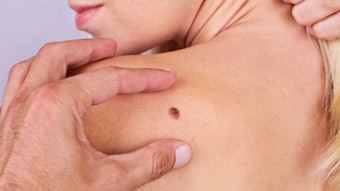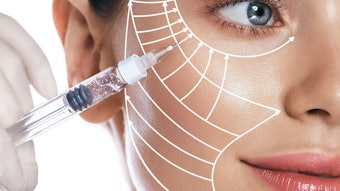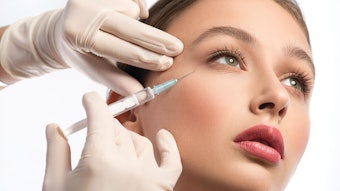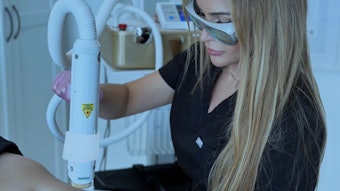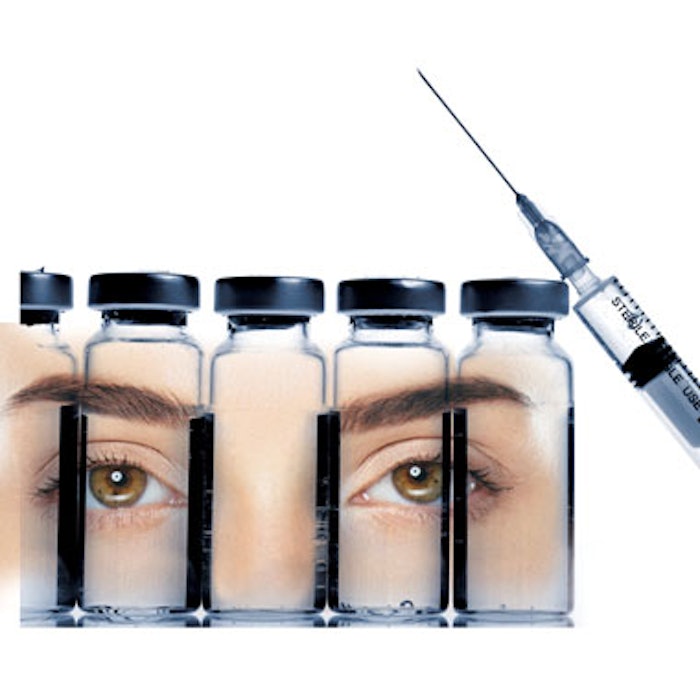
What started as a simple injection to lessen crow’s feet has blossomed into a multibillion dollar market and given rise to today’s medical aesthetics industry. With nearly 30 years of experience and a growing variety of botulinum toxins entering the market, the current focus in neuromodulation is on extending the longevity of results and delivering natural-looking outcomes.
In addition to the three currently available neuromodulators—Botox Cosmetic (Allergan), Dysport (Galderma) and Xeomin (Merz Aesthetics)—there are four more botulinum toxin type A (BtxA) products currently in Phase 2 and Phase 3 clinical trials. They include an injectable from Croma in Austria; Revance Therapeutics RT002; Evolus from Korea-based Daewoong Pharmaceuticals, which will be distributed in the U.S. by Alphaeon; and a new liquid toxin from Galderma. “This is one that I am looking forward to because it will be a premixed toxin,” says Anthony J. Wilson, MD, a plastic surgeon in Portsmouth, New Hampshire. “This could be very nice for practitioners because diluting the products takes time, and there is inconsistency and human error in mixing.”
For several years, Revance Therapeutics has been simultaneously working on two BtxAs: RT001, a topical formulation, and injectable RT002. After RT001 failed to reach its primary endpoints in Phase 3 trials, the company shifted its focus to RT002 as it reevaluates its topical program. “We are going back to our preclinical program with RT001 to understand what we can do better,” says Abhay Joshi, chief operating officer at Revance. “Once we have a more complete understanding from the clinical data, we will come back and hopefully jumpstart the program down the road.”
RT001 and RT002’s differentiating characteristic is the use of a proprietary peptide called TransMTS, which Revance believes will offer better longevity. “TransMTS is used in combination with our highly purified neurotoxin,” says Joshi. “It creates a complex ionic interaction between the toxin and the peptide that allows the product to be more stable and possibly impart increased duration.”
Results of the company’s Phase 2 data is promising, notes Chicago-based plastic surgeon Steven Dayan, MD. “In the Belmont trials, it was a one-point improvement that showed a significantly longer duration, so the data is not yet conclusive but it is exciting,” he says. “They are using a 40-unit dose to achieve that longer duration of four to six months. But is that 40-unit dose equivalent to 20 units of Botox? It’s hard to say.”
Dr. Dayan posits that if Revance is able to achieve better longevity of results, other companies may respond with higher dose trials in an effort to meet the same duration of effect. In fact, this is already happening.
Increasing Longevity
John H. Joseph, MD, director of The Clinical Testing Center of Beverly Hills in California, published “Does Increasing the Dose of AbobotulinumtoxinA Impact the Duration of Effectiveness for the Treatment of Moderate to Severe Glabbelar Lines?” in the Journal of Drugs in Dermatology (JDD) in December 2016. He initiated the study based on his experience working with Dysport during its clinical trials.
“In one particular trial, we were allowed to vary the dose based on the muscle mass,” he says. “When we crunched the data, it clearly showed that as we increased the dose, duration also increased, and it was linear—it didn’t plateau.”
For the JDD study, he and his coauthors doubled the recommended dose of Dysport, injecting 120 units into the glabella of patients with moderate and severe frown lines. With this dose, they were able to double the duration of the toxin.
“The reason people are hesitant to use a larger dose is because they are fearful that the product will spread to the upper eyelids or into the upper forehead,” says Dr. Joseph. “What I did in my trial was double the dose of toxin and reduce the volume of fluid that I used to deliver it to half of what they used in the clinical trials.”
He calls this the big dog/short leash theory. “If you want to walk a mastiff across a park full of people and dogs, are you going to use a 2-foot leash or a 40-foot leash? You’re going to use the 2-foot leash,” he explains. “The big dog is the big dose and the short leash is the small amount of fluid I’m going to use to actually inject that product into the patient. This controls the field of effect. I deliver a large amount of the neuromodulator right into the muscle, but it’s so concentrated that it can’t spread and create adverse events. All I have to do is double the dose, cut the volume in half and I get a better result that lasts longer.”
Dr. Joseph’s study is one of the first to follow patients with this type of dosing, but longer effects also have been seen in male patients who require a larger dose of toxin to achieve their desired outcomes, notes Joel L. Cohen, MD, of AboutSkin Dermatology and DermSurgery in Greenwood Village, Colorado. “That can be appealing for some people, but also we need to back up and think about what looks natural,” he says. “If we completely annihilate a muscle, that doesn’t always look appropriate.”
In his clinical practice, Dr. Joseph is most likely to use a higher, more concentrated dose in the glabella and crow’s feet, where the goal is to inactivate a significant portion of the muscle. He pulls back on his dosing in more complicated areas, like the forehead. “This is one area you don’t want completely frozen. You need some expression,” he says. “Of these three key areas—glabella, crow’s feet, forehead—the forehead is the hardest treatment area to get right and it has the highest rate of adverse events. You are not going to push hard in an area that is really tricky and does need motion.”
Achieving More Natural Results
As the injection areas for neuromodulators have expanded, so have dosing techniques. The goal is to balance a desire for longevity with the goal of providing more natural-looking results. “On the forehead, I like to underdose to preserve movement, even though I know a higher dose will last longer,” says Dr. Cohen. “This allows the muscle to still function but be softened, and it preserves brow positioning as well.”
He often uses only 7 units of Botox or Xeomin—or 15 units of Dysport—in the forehead and tells patients that the results will last seven to eight weeks. “It looks good and maintains that movement that I want,” says Dr. Cohen. “I don’t want to use a high dose to get them to the typical three or four months that we get in the glabella and crow’s feet, and I certainly don’t want to use a super high dose in the forehead, which some people prefer to do in the glabella to knock out more of the muscle or extend the timeframe.”
Dr. Wilson has also adapted his injection technique—using lower doses in the frontalis and higher doses in the glabella and crow’s feet. “I’ve seen a lot of patients who were overtreated in the frontalis, and it gives them a heavy brow,” he says. “The trend in treatment is to do less on the frontalis to allow more brow elevation, and do more in the crow’s feet.”
In some cases, injection technique may change as the patient ages. Women who previously received moderate doses of botulinum toxin in their late 20s to early 30s may benefit from lower doses as their facial anatomy changes. “Now that these patients are in their late 40s, they depend on their brow to actually lift up the lid. You do not want to knock out that mechanical action of the lateral frontalis,” says Dr. Cohen. “So there is a transition point for the forehead often in the mid- to late-40s where you may need to explain to these patients, ‘I know we’ve done it this way for a while, but we’re reaching a point where your forehead muscle is important for lifting up your brow and the brow lid positioning, so we’re not going to give you as high a dose as we did before. We want this to look natural, so we’re going to start using less and seeing you more frequently.’”
Determining the correct dosing is a matter of both experience and individual patient preference. Dr. Joseph notes that you do need to get feedback from your patients and customize treatment to their goals. “You need to ask, ‘What are your goals here? Can you describe to me what a homerun would be for you?’” he says. “Then you can tailor your dose to the patient. Sometimes that depends on how much money they want to spend. Once you obtain that information from a patient, you have to assess muscle mass. Have her actually use those muscles in front of your eyes and, with experience, you should be able to calculate in your head—that will take 10 units of Botox or that will take 15 units of Xeomin or 30 units of Dysport to get the result this patient wants.”
Dr. Wilson has his patients animate prior to treatment so he can mark his treatment areas, as well as during treatment to track the results and dosing. He recommends that injectors have new patients come back two weeks after treatment when the toxin is at peak effect. “You want to see exactly what the results are because everyone behaves differently and sometimes unpredictably,” he says. “You learn a lot about neuromodulation by bringing the patient back, and looking at how your dose and placement affected her. It’s not wise to bring them back too soon because it does take over a week for the toxin to have maximum efficacy. If you bring them back too soon and note asymmetry, you may re-treat before the toxin has taken full effect and make the asymmetry worse or overbalance.”
Comparing Toxins
With three botulinum toxins currently available and more coming soon, one of the big questions is: Does it matter which toxin you use? “The reality of these products is that they are more similar than different,” says Dr. Cohen. That being said, he has found that certain patients seem to respond better to Dysport in the lantheral canthus. “It’s probably more of a dose phenomenon but sometimes endurance athletes, who are outdoors for long periods of time, have these really long crow’s feet that go from that orbital bone all the way to their scalp line,” he says. “For one reason or another, Dysport sometimes helps people with that longer, thicker, fan shape distribution of lines in the lateral canthus more than the other products.”
Dr. Wilson was the lead author of a study published in Plastic and Reconstructive Surgery (May 2016) that compared the dynamic strain of the three currently available toxins. “We looked at the movement of dots on the forehead to quantify exactly how much muscle—or movement—change there was given a typical dose of neurotoxin,” he says.
The researchers compared 20 units of Botox, 20 units of Xeomin and 60 units of Dysport. They found very similar results between Botox and Dysport, “to the point that the differences weren’t significant,” says Dr. Wilson. “But we did see significant differences in the efficacy—at least at the dose of 20 units—between Botox and Xeomin. What we also found was increased variability in individual patients when treated with Xeomin, unlike the other toxins.”
He posits that it could be the result of a slightly different formulation—Xeomin does have less proteins associated with it—but is more likely a dosing phenomenon. “One thing practitioners will do when they see a variable response—which we see with all of the neurotoxins—is increase the dosing, and often that will change the response,” says Dr. Wilson. “One thing we theoretically proposed in the paper is perhaps we should be using a higher dose of Xeomin to increase the true response.”
He notes that because Xeomin comes at a lower price point and doesn’t require refrigeration, providers can increase the dosing and still maintain a reasonable cost.
“I think what’s most important is that people try all of the toxins and see what works best in their hands,” says Dr. Wilson. “Bring all of the patients back and really look at their results. Make sure you’re taking photographs. This really helps you master neuromodulation. And remember that each patient is unique in her anatomy, in what she desires and in her response to a specific toxin, so you may have to vary your dose or change up your toxin depending on the patient.”
Image copyright Getty Images
Inga Hansen is the executive editor of MedEsthetics.
